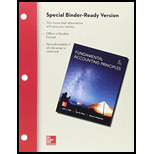
The above three ratios are important tool to measure the company ‘efficiency in earning profits and has been described as under:
Return on Investment: This suggest the percentage income earned by the company on the average amount of net assets employed in the company. The higher the ratio, better is the performance of the company.
Profit Margin: The ratio suggest that the percentage margin which the company is earning on the sales consideration.
Investment turnover ratio; The Investment turnover ratio suggest that the number of times the assets get converted in to sales. The efficiency of the company is counted on this ratio as the more number of times the assets get converted in to sales, more efficient is the company.
However, all the three ratios is integrated in the sense, that the Return on investment is a product of Margin and assets turnover ratio.
Residual income: It is also one of the measures of determining the efficiency of company in generating income. In this target income of the division/ company is provided (based on target
Requirement1:
To Determine: TheReturn on Investment for both the division need to be computed.
Requirement2:
To determine: The residual income for each department shall be computed.
Requirement 3:
To determine: The decision on whether to accept the new investment opportunity.
Want to see the full answer?
Check out a sample textbook solution
Chapter 24 Solutions
Loose Leaf for Fundamentals of Accounting Principles and Connect Access Card
- I am trying to find the accurate solution to this financial accounting problem with appropriate explanations.arrow_forwardA firm has net working capital of $1,450, net fixed assets of $5,220, sales of $12,750, and current liabilities of $1,880. How many dollars worth of sales are generated from every $1 in total assets? a. $2.92 b. $1.49 c. $2.36 d. $1.50 e. $1.37arrow_forwardCan you explain the correct approach to solve this general accounting question?arrow_forward

 AccountingAccountingISBN:9781337272094Author:WARREN, Carl S., Reeve, James M., Duchac, Jonathan E.Publisher:Cengage Learning,
AccountingAccountingISBN:9781337272094Author:WARREN, Carl S., Reeve, James M., Duchac, Jonathan E.Publisher:Cengage Learning, Accounting Information SystemsAccountingISBN:9781337619202Author:Hall, James A.Publisher:Cengage Learning,
Accounting Information SystemsAccountingISBN:9781337619202Author:Hall, James A.Publisher:Cengage Learning, Horngren's Cost Accounting: A Managerial Emphasis...AccountingISBN:9780134475585Author:Srikant M. Datar, Madhav V. RajanPublisher:PEARSON
Horngren's Cost Accounting: A Managerial Emphasis...AccountingISBN:9780134475585Author:Srikant M. Datar, Madhav V. RajanPublisher:PEARSON Intermediate AccountingAccountingISBN:9781259722660Author:J. David Spiceland, Mark W. Nelson, Wayne M ThomasPublisher:McGraw-Hill Education
Intermediate AccountingAccountingISBN:9781259722660Author:J. David Spiceland, Mark W. Nelson, Wayne M ThomasPublisher:McGraw-Hill Education Financial and Managerial AccountingAccountingISBN:9781259726705Author:John J Wild, Ken W. Shaw, Barbara Chiappetta Fundamental Accounting PrinciplesPublisher:McGraw-Hill Education
Financial and Managerial AccountingAccountingISBN:9781259726705Author:John J Wild, Ken W. Shaw, Barbara Chiappetta Fundamental Accounting PrinciplesPublisher:McGraw-Hill Education





